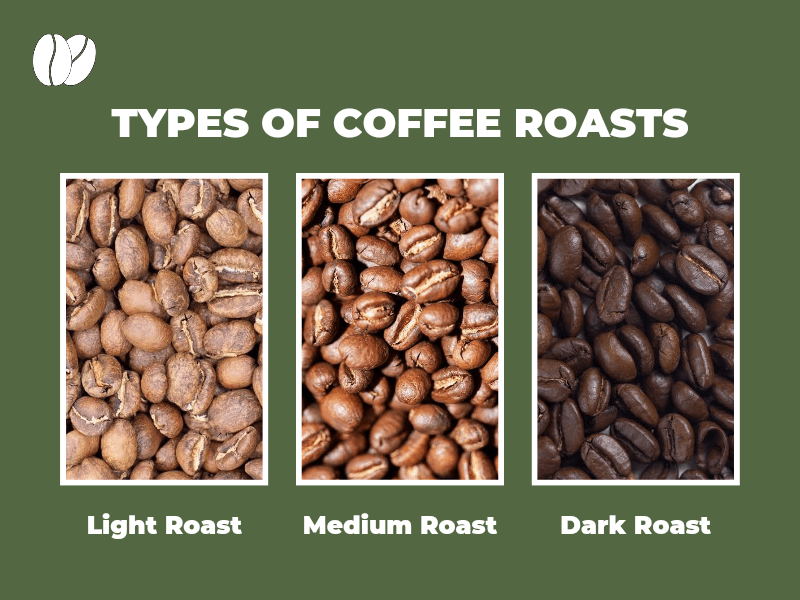While making the perfect espresso, the choice of roast is very important. Espresso demands a roast that balances complexity with boldness offering a rich and concentrated flavor profile. The best roast for espresso is medium to dark roast which brings out the deep and robust characteristics essential for a satisfying shot. These roasts increase the crema deepen the flavors and ensure a smooth, well-rounded cup. Knowing the nuances of roast levels can elevate your coffee experience.
What is the Best Roast for Making Espresso?
The best roast for espresso is medium to dark roast.
Medium to Dark Roast
Medium roasts are often recommended for espresso because they strike a good balance between acidity and sweetness. They have a well-rounded flavor profile with hints of caramel, chocolate, and nuts. This roast helps the complex flavors of the coffee to be highlighted without overwhelming bitterness.
Dark roasts are popular in espresso for their rich, bold flavors. They tend to have a lower acidity and a more robust, smoky, or even slightly burnt taste. Dark roasts are often chosen for their fuller body and crema production, which is essential for a traditional espresso shot.
Single-Origin vs. Blends
Single-origin beans that come from a specific region or country can produce unique and distinctive flavors in espresso. They might be used for a more adventurous or nuanced shot but they can also be more challenging to balance in espresso brewing due to their specific characteristics.
Espresso blends are specially crafted to combine beans from different origins to create a balanced and consistent flavor profile. Blends are designed to work well in espresso machines because they provide a harmonious mix of flavors and a reliable crema. Many specialty coffee roasters offer espresso blends that are optimized for espresso brewing.
Roast Profile and Espresso Extraction
Dark roasts tend to have more oil on the surface of the beans due to the longer roasting process. This oil helps to create a rich crema which is a desirable quality in espresso, but too much oil can clog grinders and can affect the grind.
Regardless of roast level, the freshness of the beans is important. Espresso is best made with beans that are freshly roasted mostly within a few weeks. Stale beans can lead to a lack of crema and a flat taste.
Grind Size and Brewing
For espresso using a fine grind is essential. The grind size should be consistent to ensure even extraction. Overly fine grounds can lead to over-extraction and bitterness while too coarse a grind can result in under-extraction and sour flavors.
Proper extraction time for espresso is generally around 25-30 seconds. The pressure applied during extraction is around 9 bars which also affects the flavor profile. Dark roasts benefit from slightly shorter extraction times to prevent over-extraction.
Personal Preference
The best roast for making espresso can be subjective and depends on personal taste preferences. Some people prefer the bright acidity and complex flavors of a medium roast while others enjoy the deep and smoky notes of a dark roast.
How Does Roast Level Affect Espresso Flavor?

1. Light Roast
This roast often retains more of the coffee’s original flavors which can include fruity, floral, or acidic notes. These roasts are usually more complex and vibrant but might lack the deep and caramelized flavors typical of darker roasts.
2. Medium Roast
Medium roast balances acidity with a greater emphasis on sweetness and body. You’ll often find richer and more caramel-like flavors with a smoother and more rounded taste.
3. Dark Roast
Emphasizes roasted and smoky flavors with reduced acidity and a more intense but sometimes bitter profile. The complexity of the coffee’s origin is less pronounced but the bold flavors can be appealing to those who prefer a stronger taste.
Which Coffee Beans Are Ideal for Espresso Roasting?
1. Bean Origin
Beans from Latin American countries like Colombia and Brazil and East Africa like Ethiopia and Kenya are popular for espresso. They often provide a good balance of acidity, sweetness, and body.
2. Bean Type
Arabica beans are preferred for their complex flavors and aromatic qualities though some espresso blends also include Robusta beans. Robusta can add crema and body and often has a more bitter taste which some people appreciate in their espresso.
3. Blend
Espresso often benefits from a blend of different beans by combining the unique flavors and characteristics of each to create a well-rounded shot. Common blends might include beans with fruity, nutty, and chocolatey notes to achieve a balanced profile.
4. Freshness
Regardless of origin, freshly roasted beans are important for a good espresso. Beans should be used within a few weeks of roasting to make sure that optimal flavor is achieved.
What Are the Characteristics of a Good Espresso Roast?
A good espresso roast typically has several key characteristics, such as:
- Balanced Flavor: It should offer a harmonious blend of acidity, sweetness, and bitterness. This balance creates a complex and pleasant taste experience.
- Rich Crema: A quality roast contributes to a thick, golden crema that enhances the espresso’s aroma and mouthfeel. Crema is a sign of freshness and well-roasted beans.
- Body and Mouthfeel: A good roast provides a full-bodied espresso with a smooth, velvety texture. This richness is important for a satisfying sip.
- Sweetness: Properly roasted beans develop natural sugars, resulting in a sweet, caramel-like flavor that balances the bitterness.
- Low Acidity: While a certain level of acidity can add brightness, a good espresso roast generally has a well-managed acidity to avoid sharpness or unpleasant sour notes.
- Consistency: The roast should deliver consistent flavors and performance across multiple shots, ensuring reliable quality.
These characteristics create a well-rounded and enjoyable espresso experience.
Conclusion
Selecting the best roast for espresso involves finding a balance between flavor complexity and optimal extraction. Dark roasts often provide the bold and rich flavors traditionally associated with espresso while medium roasts can offer a more nuanced taste with balanced acidity and sweetness. The choice depends on personal preference and the specific flavor profile desired. Using different roasts and adjusting brewing parameters can help you discover the perfect espresso that suits your palate.



